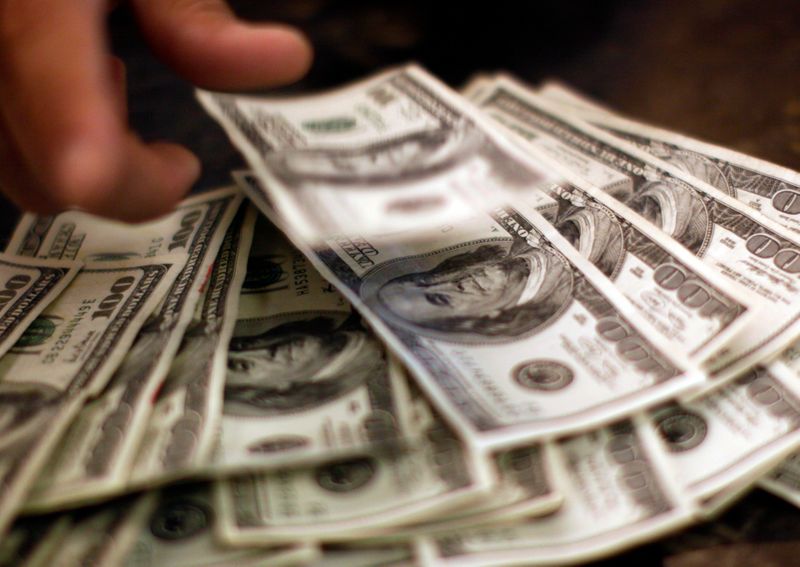Powell’s speech, Nvidia’s chips, Meta deal - what’s moving markets
Investing.com - The US dollar rose Monday after US President Donald Trump threatened to levy new tariffs on metal imports, prompting demand for the safe haven, while the euro retreated.
At 04:00 ET (09:00 GMT), the Dollar Index, which tracks the greenback against a basket of six other currencies, traded 0.2% higher to 108.140.
Dollar gains on trade war fears
Concerns about a potential global trade war were raised Monday after President Trump said he will announce new 25% tariffs on all steel and aluminium imports into the US later on Monday.
The US president also said he will impose reciprocal tariffs on major trading partners.
Trump last week kicked off a trade war, first by imposing tariffs on Mexico and Canada and then pausing them, but sticking with duties on Chinese goods.
China’s retaliatory duties on US goods are due to take effect later in the session.
“Needless to say, much uncertainty about the nature, timing and magnitude of these tariffs looks likely to keep the dollar supported this week,” said analysts at ING, in a note.
“The main threat to long dollar positions could be a re-assessment of European prospects should any expectations of a Russia-Ukraine ceasefire grow later this week.
However, for the time being, we doubt investors will want to let go of overweight positions in the dollar and we can see DXY edging towards the top of a 108-109 trading range through the early part of this week.”
Beyond Trump, investor focus will be on US inflation data on Wednesday and an appearance by the Federal Reserve Chair Jerome Powell before the House of Representatives on Tuesday and Wednesday.
Euro, sterling slip lower
In Europe, EUR/USD traded 0.1% lower to 1.0316, just above the more than two-year low it touched last week as investors braced for tariffs that Trump has repeatedly threatened against Europe.
“A move back to 1.0225 is possible if the ’reciprocal’ tariffs claw in the EU or some of the major European countries. And Wednesday’s US CPI release is another negative event risk for EUR/USD,” said ING.
GBP/USD traded 0.1% lower to 1.2397, in the wake of the Bank of England cutting interest rates by a quarter of a percentage point last week, with sterling also weighed by the talk of additional tariffs.
“Tomorrow could see the focus flip back to the Bank of England easing cycle,” said ING. “Here, former arch-hawk – potentially now arch-dove – Catherine Mann delivers a speech on the UK outlook. Understanding why she voted for a 50bp rate cut last week could shed light on whether others will want to follow suit.”
Yen retreats sharply
In Asia, USD/JPY traded 0.6% higher to 152.37, with the pair climbing strongly from its lowest level since early-December.
The yen had firmed sharply last week as a mix of strong wage data and hawkish Bank of Japan comments saw traders bet on more interest rate hikes by the central bank in the coming months.
The BOJ hiked rates by 25 basis points in January.
But softer-than-expected current account data, which showed a sharp drop in Japan’s current account surplus, took some steam out of the yen.
USD/CNY rose 0.3% to 7.3074, pressured by the talk of additional tariffs , as well as the softer-than-expected inflation data released on Sunday.
This showed CPI inflation grew less than expected, while the producer price index continued to retreat - underscoring the persistent weakness in the Chinese economy.
